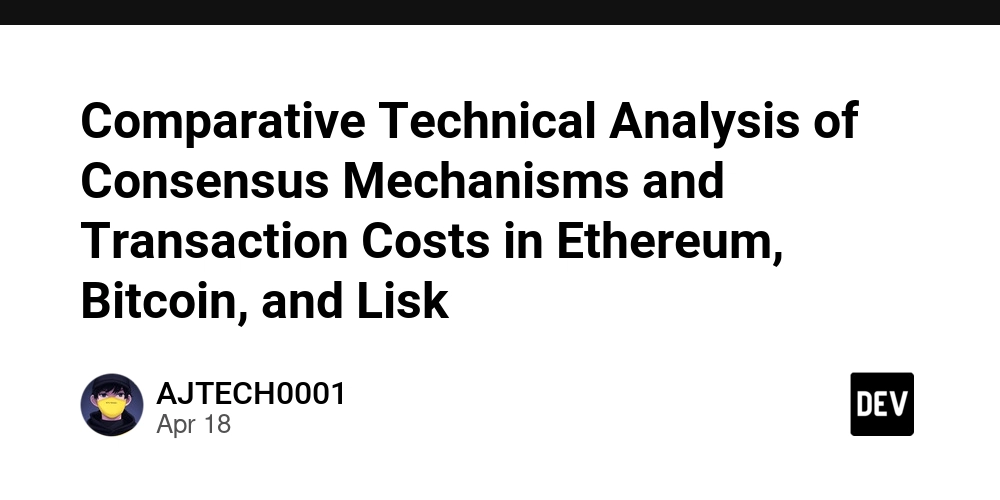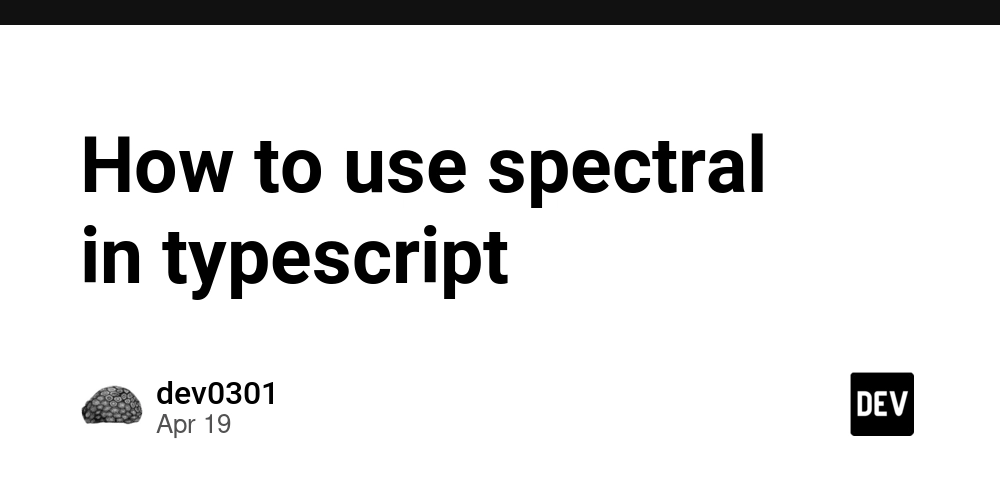Comparative Technical Analysis of Consensus Mechanisms and Transaction Costs in Ethereum, Bitcoin, and Lisk
Objective This article provides a technical comparison between Ethereum, Bitcoin, and Lisk, focusing on consensus mechanisms, finality, fraud proof mechanisms, transaction fees, and scalability. A detailed transaction-level cost analysis is also included, particularly contrasting Ethereum and Lisk. 1. Architectural Overview Metric Ethereum (Layer 1) Bitcoin Lisk (Optimistic Rollup) Consensus Proof-of-Stake (PoS) Proof-of-Work (PoW) Optimistic Rollup (secured by Ethereum) Time-to-Finality ~6.4 minutes per slot (~12.8 min full) ~60 minutes (6 block confirmations) Instant on L2, 7 days for L1 finality Fraud Proofs Slashing for invalid block proposals None Fraud dispute period (7-day challenge window) Average TX Cost ~$0.02 $1–10 (varies by congestion) ~$0.0073 Max Transactions/sec 15–30 ~7 ~2,000 Ethereum PoS Consensus: Validators stake ETH to propose and validate blocks. Finality is achieved after two epochs (~12.8 minutes). State Model: Utilizes Merkle Patricia Tries for secure, verifiable state transitions. Fee Model: Transaction fees = gasUsed × gasPrice. Dynamic fee market introduced via EIP-1559. Bitcoin PoW Consensus: Miners solve cryptographic puzzles to append new blocks. Finality is probabilistic based on block confirmations. Scripting Limitations: Bitcoin supports non-Turing complete scripts and lacks native smart contract functionality. Lisk Optimistic Rollup: Executes transactions off-chain and posts transaction data and state roots to Ethereum L1. Key Stack Components: op-geth: EVM-equivalent execution engine. op-batcher: Compresses and submits L2 transaction batches to L1. Fraud Proofs: Ensures validity by allowing challenges during a 7-day dispute window on Ethereum L1. 2. Transaction-Level Fee Analysis Ethereum Example Transaction Hash: 0x69b386f... Type: Simple ETH transfer Gas Usage: gasUsed: 23,712 gasPrice: 0.480631108 Gwei Total Fee: 23,712 × 0.000000000480631108 ETH = 0.000011396 ETH ≈ $0.02 Lisk Example Transaction Hash: 0x90910fd... Type: Smart contract interaction (e.g., setBool) L2 Execution Fee: gasUsed: 21,871 × 0.000000000001001014 ETH = 0.0000000219 ETH L1 Data Submission Cost: gasUsed: 1,600 × 0.000000000480037695 ETH = 0.000000768 ETH Total Cost: ≈ 0.0000007899 ETH ≈ $0.0073 3. Why Ethereum Costs More: Key Gas Drivers On-Chain vs. Off-Chain Execution Ethereum processes every transaction directly on Layer 1, requiring consensus by all nodes. Lisk, as a rollup, performs execution off-chain and uses Layer 1 mainly for data availability and fraud proof validation. Gas Price Disparity Ethereum's gasPrice: 0.48 Gwei Lisk L2’s gasPrice: 0.001 Gwei This ~480x difference significantly reduces Lisk’s operational costs. Execution Model Ethereum’s EVM executes all opcodes on-chain (e.g., SSTORE, CALL), incurring higher computational and storage costs. Lisk’s EVM-equivalent runtime operates off-chain, pushing minimal calldata to L1 for verification. 4. Conclusion Ethereum Emphasizes decentralization and security by maintaining full execution on L1. Trade-offs include higher fees and slower finality. Lisk Leverages Ethereum’s security via optimistic rollups while dramatically reducing costs and improving scalability. Exemplifies Ethereum’s scaling roadmap, in which L1 becomes a data availability layer and L2 handles scalable computation. Future Trends As Ethereum moves toward proto-danksharding and full data availability sampling, rollups like Lisk will become central to its scaling ecosystem. These systems are already delivering >99% fee reductions and orders-of-magnitude improvements in throughput without compromising Ethereum’s security guarantees.

Objective
This article provides a technical comparison between Ethereum, Bitcoin, and Lisk, focusing on consensus mechanisms, finality, fraud proof mechanisms, transaction fees, and scalability. A detailed transaction-level cost analysis is also included, particularly contrasting Ethereum and Lisk.
1. Architectural Overview
| Metric | Ethereum (Layer 1) | Bitcoin | Lisk (Optimistic Rollup) |
|---|---|---|---|
| Consensus | Proof-of-Stake (PoS) | Proof-of-Work (PoW) | Optimistic Rollup (secured by Ethereum) |
| Time-to-Finality | ~6.4 minutes per slot (~12.8 min full) | ~60 minutes (6 block confirmations) | Instant on L2, 7 days for L1 finality |
| Fraud Proofs | Slashing for invalid block proposals | None | Fraud dispute period (7-day challenge window) |
| Average TX Cost | ~$0.02 | $1–10 (varies by congestion) | ~$0.0073 |
| Max Transactions/sec | 15–30 | ~7 | ~2,000 |
Ethereum
- PoS Consensus: Validators stake ETH to propose and validate blocks. Finality is achieved after two epochs (~12.8 minutes).
- State Model: Utilizes Merkle Patricia Tries for secure, verifiable state transitions.
-
Fee Model: Transaction fees =
gasUsed × gasPrice. Dynamic fee market introduced via EIP-1559.
Bitcoin
- PoW Consensus: Miners solve cryptographic puzzles to append new blocks. Finality is probabilistic based on block confirmations.
- Scripting Limitations: Bitcoin supports non-Turing complete scripts and lacks native smart contract functionality.
Lisk
- Optimistic Rollup: Executes transactions off-chain and posts transaction data and state roots to Ethereum L1.
-
Key Stack Components:
-
op-geth: EVM-equivalent execution engine. -
op-batcher: Compresses and submits L2 transaction batches to L1.
-
- Fraud Proofs: Ensures validity by allowing challenges during a 7-day dispute window on Ethereum L1.
2. Transaction-Level Fee Analysis
Ethereum Example
-
Transaction Hash:
0x69b386f... - Type: Simple ETH transfer
-
Gas Usage:
-
gasUsed:23,712 -
gasPrice:0.480631108 Gwei
-
- Total Fee:
23,712 × 0.000000000480631108 ETH = 0.000011396 ETH ≈ $0.02
Lisk Example
-
Transaction Hash:
0x90910fd... - Type: Smart contract interaction (e.g., setBool)
- L2 Execution Fee:
gasUsed: 21,871 × 0.000000000001001014 ETH = 0.0000000219 ETH
- L1 Data Submission Cost:
gasUsed: 1,600 × 0.000000000480037695 ETH = 0.000000768 ETH
- Total Cost:
≈ 0.0000007899 ETH ≈ $0.0073
3. Why Ethereum Costs More: Key Gas Drivers
On-Chain vs. Off-Chain Execution
- Ethereum processes every transaction directly on Layer 1, requiring consensus by all nodes.
- Lisk, as a rollup, performs execution off-chain and uses Layer 1 mainly for data availability and fraud proof validation.
Gas Price Disparity
- Ethereum's gasPrice: 0.48 Gwei
- Lisk L2’s gasPrice: 0.001 Gwei
- This ~480x difference significantly reduces Lisk’s operational costs.
Execution Model
- Ethereum’s EVM executes all opcodes on-chain (e.g., SSTORE, CALL), incurring higher computational and storage costs.
- Lisk’s EVM-equivalent runtime operates off-chain, pushing minimal calldata to L1 for verification.
4. Conclusion
Ethereum
- Emphasizes decentralization and security by maintaining full execution on L1.
- Trade-offs include higher fees and slower finality.
Lisk
- Leverages Ethereum’s security via optimistic rollups while dramatically reducing costs and improving scalability.
- Exemplifies Ethereum’s scaling roadmap, in which L1 becomes a data availability layer and L2 handles scalable computation.
Future Trends
As Ethereum moves toward proto-danksharding and full data availability sampling, rollups like Lisk will become central to its scaling ecosystem. These systems are already delivering >99% fee reductions and orders-of-magnitude improvements in throughput without compromising Ethereum’s security guarantees.










































































